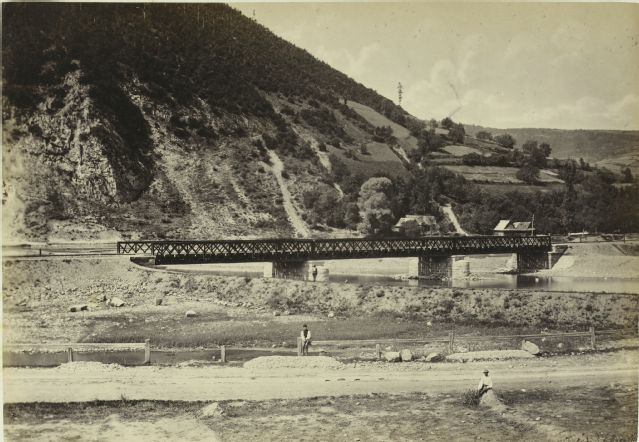
Košicko-Bohumínska
railway
“The history of the Košice – Bohumín railway has been written by Austro – Hungarian or Czechoslovak historians. In 1971, Marián Klapita published a comprehensive study of its origin and development by the historians of the Považské Museum in Žilina; in 2002, an extensive monographic publication Košice – Bohumín Railway was published by Ladislav Szojka, Rudolf Kukučík and Pavel Kukučík.”
The Košice-Bohumín railway ran between Bohumín and Košice. It was operated by a private railway company. In 1864, a Commemorative File on this railway was issued in Vienna, which designed a railway line from Košice through the valleys of the Hornád, Váh and Kysuca rivers via the Jablunkov Pass to Bohumín. A concession for the construction and operation of the line was awarded in 1866 to a consortium of Belgian entrepreneurs, the Riche’s siblings. The construction was originally supposed to start from Košice, but at the initiative of Silesian industrialists it began to be built from Bohumín. Work began at the end of 1867 and on May 5, 1869, a 32 km long section from Bohumín to Tešín was opened. After financial problems, the construction was taken over by the Anglo-Austrian bank from April 1, 1869, and the line was completed in its entire planned length on March 12, 1872. The Košice-Bohumín railway was built as a single track (the second track was to be laid only if 1 km of the line exceeds the value of 150 000 zł). The bottom for two tracks was built only on the section Vrútky – Český Těšín, where a rapid increase in traffic was expected. However, the demanding mountain terrain (41% of the track lay in curves, 88% on a slope) placed such high demands on the builders: they had to move about 17.6 million cubic meters of soil, build notches and embankments up to 26 m high (74% of the track lay on embankments, 26% in notches, 869 bridges and culverts and a total of 2200 m of tunnels (the longest were Strečniansky – 524 m, Margecanský – 431 m and Kralovanský – 401 m, which were built with a width at the level of the track 4.4 m and height from this level of 6m. The width of the plain head was 4 m on the track, 4.4 m in sections with retaining walls, later it was adjusted uniformly to 4.9 m. The smallest arch had a radius of 250 m. 935 masons and 2140 carpenters worked on the rapidly progressing construction. , 482 stonemasons, 738 miners, 152 stone breakers and 953 other craftsmen.
The construction was carried out only with the help of draft animals, wagons or carts, and in some periods up to 17,000 workers worked on the construction at the same time. The first test train from Tešín to Žilina arrived on December 20, 1870, and this section was officially opened on January 8, 1871. The line from Žilina to Poprad was opened before Christmas on December 8, 1871. Almost all local railways were owned or operated by the Košice-Bohumín Railway. One of the first to build a line from Čadca to Serafínov with a continuation to Poland to Zwadoň, opened on November 3, 1884.
Construction costs reached 58,237,800 gold, and in the beginning one pair of mixed trains ran along the single-track line. They covered the distance of 367 km in 13 hours and 18 minutes.
Construction costs reached 58,237,800 gold, and in the beginning one pair of mixed trains ran along the single-track line. They covered the distance of 367 km in 13 hours and 18 minutes.

nearby is located

